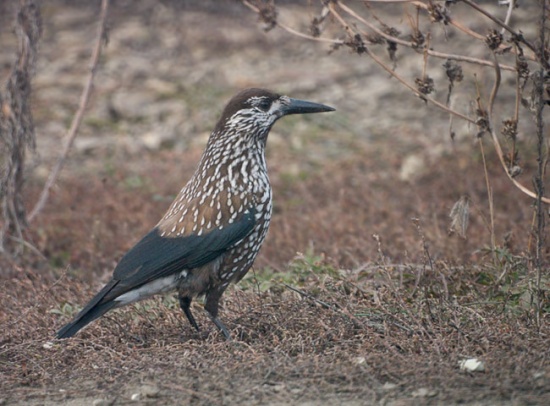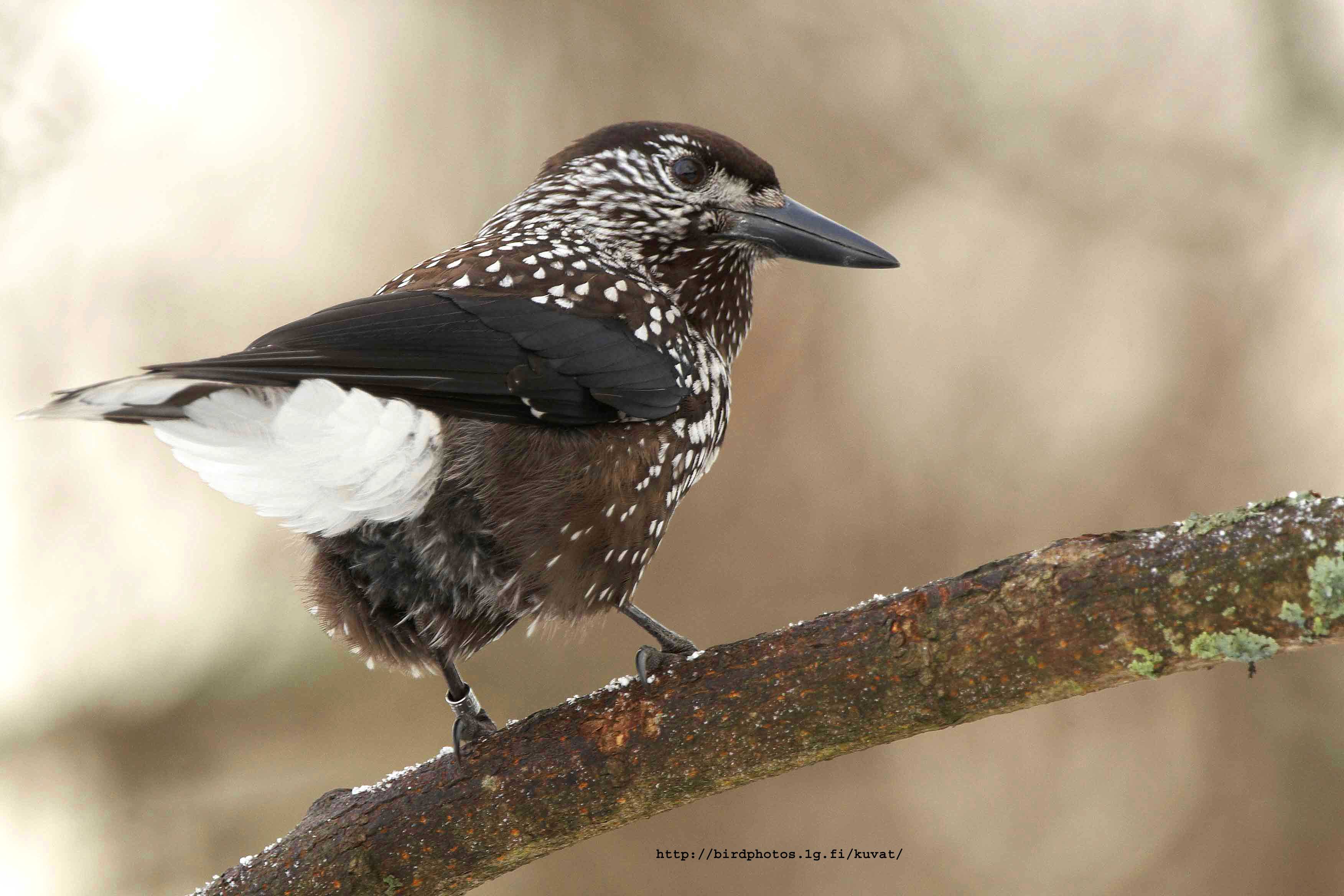
Nucifraga caryocatactes
SUBFAMILY
Corvinae
TAXONOMY
Nucifraga caryocatactes Linnaeus 1758, Sweden. Eight subspecies.
OTHER COMMON NAMES
English: Nutcracker, Eurasian nutcracker, spotted nutcracker;
French: Cassenoix mouchetй; German: Tannenhдher; Spanish:
Cascanueces Moteado.
PHYSICAL CHARACTERISTICS
12.48–13.26 in (32–34 cm); 4.34–7 oz (124–200 g). Body
plumage is dark brown profusely spotted with white; lower
belly and undertail-coverts are white. Wings are glossy black
with white-tipped coverts. Tail is also glossy black with white
feather tips, increasing in extent toward the outermost. Bill,
legs, and feet are black.
DISTRIBUTION
Coniferous forests of Europe and Asia. North American equivalent
is Clark’s nutcracker.
HABITAT
Coniferous forests. Widely dispersed during irruptions following
failure of seed harvest.
BEHAVIOR
Wary, but perches on conspicuous treetops. Holds year-round
territory, keeping several stores of nuts and seeds.
FEEDING ECOLOGY AND DIET
Heavily reliant on conifer seeds and hazel nuts, which are
stored as winter supply. Insects and berries eaten seasonally.
REPRODUCTIVE BIOLOGY
Solitary nester. Generally lays three to four eggs March
through May in stick nest woven together with plant stems.
Cup lined with moss and grass. Incubation 16–18 days; fledging
about 23 days. Young remain with parents for rest of summer.
CONSERVATION STATUS
Not threatened. Abundant throughout its range.
SIGNIFICANCE TO HUMANS
A significant planter of conifers thanks to its habit of storing
pine seed underground.
Other popular Animals
Photo Gallery of - Spotted nutcracker




 Animalia Life
Animalia Life